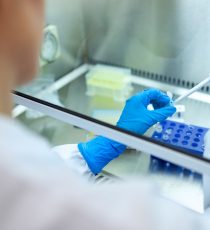Chemical Hazards
When working in a lab, it is important to understand the many chemical hazards that can occur. The most common of these hazards is fire, which can occur when you’re handling flammable liquids. The National Fire Protection Association has developed a guide to identifying and assessing hazards. This guide provides information on hundreds of different chemicals, as well as safe handling, storage and emergency procedures.
Personal Protective Equipment
When working in a lab, it is necessary to wear proper protective clothing. These garments protect the body from exposure to potentially hazardous materials and must cover the entire body, including the legs, arms, and hands. They must be made of materials that are impervious to liquids and powders and must be resistant to punctures and impacts from sharp objects and falling objects. Proper footwear should also be worn at all times. Depending on the hazards that are present, additional personal protective equipment may be required.
Hand Hygiene
Hand hygiene is extremely important when working in a laboratory. Hand washing should be done before, during, and after handling animals and infectious materials. In addition, workers should wash their hands before eating or going to the restroom. When washing hands, it is best to use a hand-washing soap with germicidal properties.
Labelling
Labelling of chemicals is a major requirement when working in a lab or with chemicals. The label should contain the product name and hazard identification. Depending on the chemical, this can be done by using words, pictures, symbols, or a combination of these. It will also include the manufacturer, importer, and telephone number of the responsible party.




